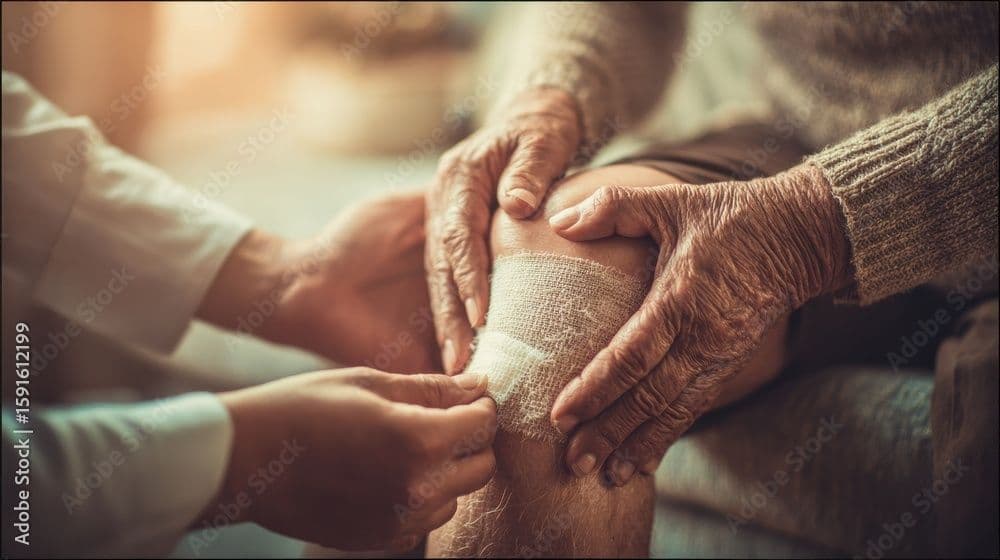
Nursing home abuse and neglect put vulnerable residents at serious risk, leading to malnutrition, dehydration, infections, and preventable injuries. When facilities fail to provide adequate care, residents suffer, and families are left feeling helpless. Lack of supervision, improper medical treatment, and unsafe conditions can result in devastating harm. Understanding the warning signs, knowing your legal rights, and holding negligent facilities accountable are crucial steps in protecting your loved ones. Learn how to take action and seek justice.
November 12, 2025
3 min
When families entrust a loved one to a nursing home, they expect professional care that protects their comfort and dignity. Yet one of the clearest and most painful signs of neglect remains far too common: bedsores, also known as pressure ulcers.
Bedsores are not just skin irritations. They are medical injuries that develop when residents are left immobile for too long without proper repositioning, hygiene, or nutrition. In many cases, they are entirely preventable—and when they occur, it’s often because a facility has failed in its most basic duty of care.
For families in Cleveland, Ohio, and across the country, understanding how and why bedsores form can help identify nursing home neglect early—and hold those responsible accountable.
A bedsore, or pressure ulcer, is a wound that develops when prolonged pressure cuts off circulation to the skin and underlying tissues. The most common areas affected are those where bone lies close to the surface, including:
Without consistent movement, moisture control, and nutrition, skin begins to die, leading to painful and dangerous open wounds that can become infected.
The medical community classifies bedsores into four stages based on severity:
Stage 3 and Stage 4 bedsores are considered “never events” by healthcare standards—meaning they should never happen in a properly run facility.
Healthy skin requires movement, cleanliness, and nutrition—all things a nursing home is responsible for maintaining. When bedsores appear, it often indicates systemic failures such as:
Residents who are bedridden or use wheelchairs must be repositioned every two hours to relieve pressure points. When staff fail to do this, sores develop quickly.
Sweat, urine, and feces weaken skin and make it prone to breakdown. Facilities that neglect bathing or quick cleanup after accidents are placing residents at risk.
Malnourished residents heal more slowly and are more vulnerable to skin breakdown. When nutrition is poor, bedsores become inevitable.
Understaffed facilities often leave residents sitting or lying for hours without attention. This is one of the leading causes of pressure ulcers in nursing homes.
Staff who are not trained to identify early-stage pressure injuries often miss the window for prevention.
Each of these failures represents negligence—a breach of the nursing home’s duty to provide adequate and attentive care.
Both federal and Ohio state laws set clear standards for preventing pressure ulcers.
Under the Nursing Home Reform Act (42 U.S.C. § 1395i-3), facilities must ensure that:
In Ohio, Administrative Code 3701-17-09 reinforces these obligations, requiring:
Failure to comply can result in state citations, fines, and civil liability for neglect.
Untreated bedsores can cause life-threatening conditions, including:

For elderly residents, these complications can be fatal. According to the Centers for Disease Control and Prevention (CDC), pressure ulcers contribute to tens of thousands of nursing home deaths each year in the U.S.
Families visiting loved ones can often spot early indicators of neglect. Warning signs include:
If staff refuse to let you view a wound or avoid questions about care, it may be a sign of concealment or ongoing neglect.
If you suspect your loved one has developed bedsores in a nursing home, immediate action is crucial.
To hold a facility accountable, your attorney must show:
Evidence often includes:
Facilities that repeatedly violate pressure ulcer prevention standards often show a pattern of systemic neglect.
Victims of nursing home neglect due to bedsores may be entitled to compensation for:
These claims not only bring justice to affected families but also push facilities to improve care standards statewide.
Attorney Michael Hill, based in Cleveland, Ohio, has extensive experience handling nursing home neglect cases involving pressure ulcers. He understands that these injuries are rarely isolated events—they are symptoms of systemic failure.
Michael and his team:
Michael’s commitment to protecting the elderly is rooted in compassion, persistence, and an unwavering belief in accountability.
Bedsores are among the clearest indicators of nursing home neglect. When residents are left unattended, unclean, or malnourished, their skin—and their dignity—suffer.
No family should accept a facility’s claim that these injuries are “unavoidable.” In most cases, they are the result of preventable neglect.
If your loved one has developed bedsores in a nursing home, Attorney Michael Hill can help. With deep experience in elder neglect cases across Ohio and nationwide, he works to uncover the truth, seek justice, and ensure that seniors receive the care and respect they deserve.